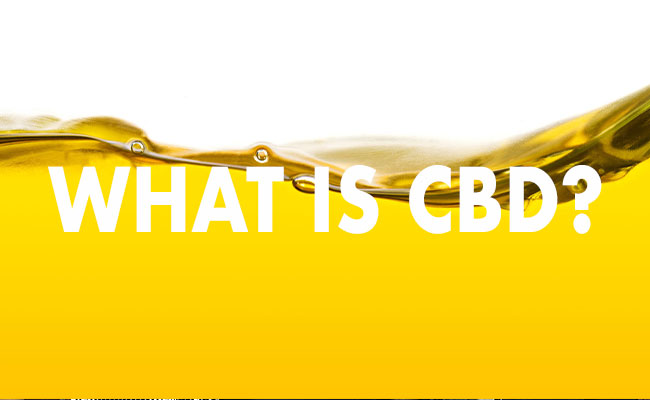
Cacao | Nature’s Chocolate
WRITTEN BY TRANG TRAN AND DR. SWATHI
There is so much hype around cacao, but what exactly is it? What benefits does it have? Read on to answer those questions and learn about the wonder that is nature’s chocolate.
What is the difference between cacao and cocoa?
Cacao refers to the cacao beans that are unprocessed, whereas cocoa refers to the cacao beans that are processed (i.e., roasting, grinding). Chocolate refers to food prepared from roasted cacao seeds and, in other words, it is a highly processed form of cacao. Due to the copious health benefits, the Mayans called cocoa the ancient name “Kakawa” which means “Foods of the Gods.” Hence, the scientific name of the cocoa tree, Theobroma cacao, emerges with the words “theo” meaning God and “broma” meaning food. Cacao is touted as a superfood and is one of the best-known sources of dietary polyphenols consisting of catechins (37%), anthocyanidins (4%), and proanthocyanidins (58%). The main constituents of flavonoids, a member of the broader polyphenol class, are the flavan-3-ols, present as monomeric (-)-epicatechin and (+)-catechin. Cacao is also rich in minerals including potassium, phosphorus, copper, iron, zinc and magnesium. Of note, magnesium is essential in the maintenance of blood pressure, neuronal transmission, muscle contraction, and blood glucose regulation. Other compounds such as methylxanthines (theobromine and caffeine) that are found in cacao are known to possess a variety of health benefits.
What are methylxanthines?
Pharmacologically, methylxanthines stimulate the central nervous system, affect the metabolism, relax the bronchioles in the lung, and increase the secretion of gastric acids. More specifically, methylxanthines are natural products that act as adenosine receptor blockers thereby causing vasoconstriction. Despite the central actions and the ability to cross the blood brain barrier, methylxanthines do not produce chemical dependence. Comparing between the two methylxanthines, theobromine (which is toxic to dogs) is less potent than caffeine and has been shown to protect the enamel surface and suppress cough without the side effects exhibited by other antitussive drugs such as codeine. Remarkably, theobromine is a first-in-class non-codeine non-opioid drug for cough in South Korea. Moreover, epidemiological evidence demonstrated that theobromine and caffeine improve lung function in asthma patients. Given its receptor binding, caffeine may improve respiratory muscle function and diaphragm contraction. While caffeine could cause insomnia, theobromine, on the other hand, promotes sleep. In general, cacao consumption is not linked with either of these effects and does not cause sleep disturbances. Overall, methylxanthines have been shown to play a role in oral health, respiratory tract diseases, and sleep.
What are the health benefits of cacao?
Other bioactive substances in cacao exhibit several proven health benefits for the cardiovascular system, diabetes, nervous/neurological system, cancer, skin, and stress.
Can cacao be beneficial for the heart?
Flavanols inhibit blood clot formation by enhancing the production of nitric oxide, a vasodilator. The clot prevention property of cacao parallels with the effects of aspirin. Polyphenols activate the enzyme, nitric oxide synthase, which helps decrease blood pressure. Another potential mechanism for blood pressure lowering includes flavanol-induced inhibition of angiotensin-converting enzyme. Moreover, the flavonoids in cacao scavenge free radicals thereby decreasing LDL cholesterol (the “bad” cholesterol) and increasing HDL cholesterol (the “good” cholesterol).
Does cacao have an effect on diabetes?
The bioactive compound, epicatechin, in cacao increases insulin production, strengthens the beta cells (cells that synthesize and secrete insulin), and controls blood glucose. As insulin sensitivity relies to some degree on nitric oxide levels, flavanols therefore may reduce insulin resistance by increasing nitric oxide. Additionally, flavanols improve blood glucose by slowing carbohydrate digestion and absorption in the gut.
Does cacao affect the nervous system?
Cocoa flavanols enhance cerebral blood flow, promote brain perfusion, and protect from neurodegeneration. Blood perfusion in two particular areas in the brain (the anterior cingulate cortex and parietal cortex) increases attention and learning capacity. By improving the cell function and stimulating blood vessel formation, flavonoids can reduce neurodegeneration and prevent age-related cognitive decline such as Alzheimer disease.
Does cacao have anti-cancer effects?
Free radicals damage the DNA which can lead to the development of cancer. The high antioxidant activity of cacao can help prevent free radicals from wreaking havoc in our bodies. Powerful compounds like polyphenols and procyanidins can control abnormal cell growth by interacting with the production of enzymes responsible for inducing tumor growth.
Can cacao benefit my skin?
Exposure to ultraviolet light can cause overproduction of free radicals and reactive oxygen species which activate inflammation and skin cell degeneration. The antioxidants in cacao scavenge these bad guys and help enhance skin health. High flavanol consumption was associated with less skin roughness, scaling and wrinkles, and improved smoothness in skin compared to low flavanol consumption.
So, you’re saying eating cacao can decrease my stress levels? Sign me up.
The mechanism by which flavanol in cacao decreases stress is due to the inhibition of the over-secretion of stress releasing hormones (eg. adrenocorticotropic hormone and cortisol). Cocoa powder contains three unsaturated N-acylethanolamines (cannabinoid mimics) that may activate cannabinoid receptors or increase anandamide concentrations (like exercise), which in turn produces a sense of well-being.
How can I integrate cacao into my daily life?
There are many ways to enjoy cacao powder such as in hot chocolate or baked goods, but it is important to note that when used in baked goods, the antioxidant activity depends on the type of leavening agent that is used with them. Study has shown that using baking soda as a leavening agent resulted in an increased pH, loss of antioxidant activity, and destruction of flavanol compounds; on the other hand, using baking powder resulted in complete retention of antioxidant activity and flavanol content.
Since flavanols impart a bitter, astringent flavor, cacao is usually extensively processed to improve palatability—extensive cocoa processing decreases the polyphenol content by up to 10-fold (wow!). Even more potent than cacao powder is ceremonial cacao that has been used for thousands of years in traditional ceremonial cacao ceremonies. This use of cacao in a sacred holistic healing practice has been thought to be rejuvenative through rebalancing our mind, body, and spirit.
The bottom line
Consuming raw cacao powder is preferred over cocoa powder for its nutritional benefits. Given chocolate bars, cacao nibs, ceremonial cacao, and other options in which cacao is being sold, be aware that many products on the market are laden with refined sugar, so always be sure to read the labels and ingredient lists before purchasing your next delicious treat.
References:
- Ceremonial Cacao Health Benefits. Firefly Chocolate. https://ceremonial-cacao.com/pages/health/. Accessed April 13, 2021.
- Ellam S, Williamson G. Cocoa and Human Health. Annu Rev Nutr. 2013;33(1):105-128.
-
ES, Panjikkaran ST, L SC, R RP. Health benefits of bioactive compounds from cocoa (Theobroma cacao). Agric. Rev. 2019.
-
Franco R, Oñatibia-Astibia A, Martínez-Pinilla E. Health Benefits of Methylxanthines in Cacao and Chocolate. Nutrients. 2013;5(10):4159-4173.
- Latif R. Chocolate/cocoa and human health: a review. Neth J Med. 2013;71(2):63-68.
-
McShea A, Ramiro-Puig E, Munro SB, Casadesus G, Castell M, Smith MA. Clinical benefit and preservation of flavonols in dark chocolate manufacturing. Nutr Rev. 2008;66(11):630-641.
-
Montagna MT, Diella G, Triggiano F, Caponio GR, Giglio OD, Caggiano G, Ciaula AD, Portincasa P. Chocolate, “Food of the Gods”: History, Science, and Human Health. Int. J. Environ. Res. Public Health. 2019;16(24):4960.
-
Stahl L, Miller K, Apgar J, Sweigart D, Stuart D, McHale N, Ou B, Kondo M, Hurst W. Preservation of Cocoa Antioxidant Activity, Total Polyphenols, Flavan-3-ols, and Procyanidin Content in Foods Prepared with Cocoa Powder. J Food Sci. 2009;74(6).
This article was edited by Dr. Swathi and was written by Element Apothec Scientific Communications Intern, Trang Tran. She is a Doctor of Pharmacy (PharmD) student at Oregon State University and Oregon Health & Science University College of Pharmacy in Portland, Oregon.











